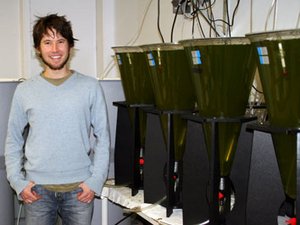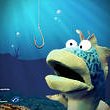New methods to provide cod larvae with sufficient selenium
Samuel James Penglase from Australia enriches rotifers at NIFES as a part of his masters degree work at the University of Bergen. Photo: NIFES
Farmed cod larvae are dependent on feeding on live zooplankton, like rotifers. However, analyses have shown that rotifers contain low amounts of selenium and other minerals. New methods will now be explored in order to add selenium to rotifers in order to provide the cod with sufficient quantities.
Mortality and developmental deformities during the larval stage are bottlenecks in cod farming. In the wild the cod larvae feed on copepods and in intensive farming they need to feed on rotifers due to their immature digestive system. Rotifers contain less iodine, selenium, manganese, copper and zinc than copepod and research at the National Institute of Nutrition and Seafood Research (NIFES) show that cod larvae fed rotifers enriched with iodine and selenium have a higher survival rate than control larvae.
“This indicates that the control rotifers were deficient in either iodine or selenium or both. In a new project we will examine whether adding selenium-enriched yeast to rotifers will supply the cod with enough selenium and thereby increase growth and survival rates and decrease the number of deformities,” said researcher Kristin Hamre in the Aquaculture Nutrition Research Programme at NIFES. The project is in collaboration with Alltech AS, who produces the selenium-rich yeast Sel-Plex.
“Selenium is a component of an enzyme that prevents cod from absorbing rancid fatty acids. This may affect growth, survival and the development of deformities. We know, for example, that rancid feed results in deformities,” says Hamre.
Enrichment of rotifers
In connection with using the selenium-enriched yeast, new routines will be developed for the enriching of rotifers.
“The rotifers will be given both algae and enrichment substrates in use in cod aquaculture facilities today, but they will also be given extra selenium,” explained Samuel James Penglase, a master student at the University of Bergen who is doing his master thesis and research in connection with his degree at NIFES.
"The yeast will be added at different levels and at different times and we will examine when the rotifers have the best nutritional composition for a cod larvae".














